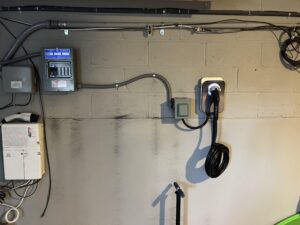Looking to connect a battery charger to your car? You’ve come to the right place! In this article, we will provide you with a simple step-by-step guide on how to easily connect a battery charger to your car. Whether you’re a novice or a seasoned car enthusiast, we’ve got you covered. By the end of this article, you will have all the knowledge and confidence you need to successfully connect your battery charger to your car and get it up and running in no time. Let’s dive right in, shall we?
How to Connect a Battery Charger to Your Car
Gather the Necessary Tools and Equipment
Before you begin connecting the battery charger to your car, it’s important to gather all the necessary tools and equipment. Here’s what you’ll need:
- A battery charger: Choose a charger that matches the voltage of your car’s battery. It’s also recommended to opt for a charger with a built-in safety feature like automatic shut-off.
- Gloves and safety goggles: These will protect your hands and eyes from any potential sparks or battery acid.
- Wire brush or battery terminal cleaner: Use this to clean the battery terminals if they are dirty or corroded.
- A wrench or pliers: You’ll need these tools to loosen and tighten the battery terminals.
- A clean cloth or rag: This will come in handy for wiping any debris or dirt off the battery terminals.
Ensure Safety First
Before you start connecting the battery charger, it’s crucial to prioritize safety. Follow these safety guidelines to avoid any accidents or injuries:
- Work in a well-ventilated area: Make sure you are in a space with good air circulation to prevent the buildup of potentially explosive gases.
- Turn off the car: Ensure the car’s engine and all electrical systems are turned off before attempting to connect the battery charger.
- Remove any metal jewelry: Take off any rings, bracelets, or watches to reduce the risk of electrical shocks.
- Wear protective gear: Put on gloves and safety goggles to protect yourself from sparks and battery acid.
Locate the Battery
The next step is to locate the battery in your car. In most vehicles, the battery can be found under the hood, but some models may have it in the trunk or under the rear seat. Refer to your car’s owner’s manual if you’re unsure about its exact location.
Once you’ve located the battery, familiarize yourself with its positive (+) and negative (-) terminals. They are usually marked with the respective symbols.
Clean the Battery Terminals
Before connecting the battery charger, it’s essential to clean the battery terminals. Over time, corrosion and dirt can accumulate on the terminals, hindering the connection. Follow these steps to clean the terminals:
- Put on your gloves and safety goggles to protect yourself.
- Use a wire brush or battery terminal cleaner to scrub off any corrosion or dirt from the battery terminals.
- Wipe the terminals with a clean cloth or rag to remove any remaining debris.
Connecting the Battery Charger
Now that you’ve prepared the necessary tools and cleaned the battery terminals, you’re ready to connect the battery charger. Follow these steps:
- Make sure the battery charger is unplugged from the power source.
- Identify the charger’s positive and negative clamps. The positive clamp is usually red, while the negative clamp is black.
- Connect the positive clamp to the positive (+) terminal of the battery. Ensure a secure connection by tightening the clamp with a wrench or pliers.
- Connect the negative clamp to the negative (-) terminal of the battery. Again, tighten the clamp securely.
- Once both clamps are securely attached, plug the charger into a power source.
Charging the Battery
With the battery charger connected, it’s time to start charging the battery. Follow these steps:
- Refer to the battery charger’s instructions for specific charging guidelines.
- Set the charger to the appropriate voltage and charging mode recommended for your battery.
- Turn on the charger and allow it to charge the battery. The charging time will vary depending on the charger and the condition of the battery.
- Monitor the charging process and keep an eye on the charger’s progress indicators.
- Once the battery is fully charged, carefully unplug the charger from the power source.
Disconnecting the Battery Charger
After the battery is fully charged, it’s important to disconnect the battery charger properly. Follow these steps:
- Turn off the charger and unplug it from the power source.
- Start by removing the negative clamp from the battery’s negative (-) terminal.
- Next, remove the positive clamp from the battery’s positive (+) terminal.
- Ensure the clamps are securely stored to avoid any accidental contact.
Perform a Battery Test
Once you’ve disconnected the battery charger, it’s a good idea to perform a battery test to ensure everything is functioning properly. You can use a multimeter or take your car to a professional mechanic to conduct the test.
A battery test will assess the battery’s voltage and overall health. If the battery is still experiencing issues, it may be time to replace it.
Maintaining a Healthy Battery
To prolong the life of your car’s battery and prevent any future issues, consider implementing the following maintenance tips:
- Regularly check the battery terminals for any signs of corrosion and clean them as necessary.
- Keep your battery charged by taking your car for longer drives or using a maintenance charger if it’s not frequently driven.
- Avoid leaving electrical components on when the engine is off, as this can drain the battery.
- Check the battery’s water levels if it’s not a maintenance-free battery. Add distilled water if necessary.
- Inspect the battery for any physical damage, leaks, or bulges. If you notice any issues, have it checked by a professional.
Remember, proper maintenance and regular charging will help keep your car’s battery in optimal condition.
Knowing how to connect a battery charger to your car is a valuable skill that can save you from getting stranded with a dead battery. By following the steps outlined in this guide and prioritizing safety, you’ll be able to maintain your battery’s health and prevent any future problems. Remember to consult your car’s owner’s manual and the instructions provided with your battery charger for specific guidelines and precautions. Happy charging!
Note: The information provided in this article is intended for educational purposes only and should not replace professional advice. Always consult a qualified technician or your car’s manufacturer for specific instructions and recommendations regarding your vehicle’s battery.
How to use Car Battery Charger
Frequently Asked Questions
How do I connect a battery charger to my car?
To connect a battery charger to your car, follow these steps:
What type of battery charger should I use for my car?
It is important to use a battery charger that is compatible with your car’s battery. For most cars, a standard lead-acid battery charger will work. However, if your car has a different type of battery, such as a lithium-ion battery, you will need a charger specifically designed for that type of battery.
Where can I find the battery in my car?
The location of the battery can vary depending on the make and model of your car. In most cars, the battery is located under the hood, often on either side of the engine compartment. However, some cars may have the battery located in the trunk or under the rear seat. Consult your car’s owner manual for the exact location of the battery.
What safety precautions should I take when connecting a battery charger to my car?
When connecting a battery charger to your car, it is important to take the following safety precautions:
- Ensure that both the charger and the car’s engine are turned off before connecting or disconnecting the charger.
- Wear protective gloves and eye goggles to protect yourself from any potential battery acid exposure.
- Make sure the charger’s cables are in good condition and not frayed or damaged.
- Connect the charger’s positive cable (usually red) to the positive terminal on the battery and the negative cable (usually black) to a grounded metal part of the car, such as the engine block.
- Double-check all connections before turning on the charger.
How long does it take to charge a car battery?
The charging time for a car battery can vary depending on several factors, including the battery’s capacity, the charger’s output, and the state of charge of the battery. On average, it can take anywhere from a few hours to overnight to fully charge a car battery. It is important to consult the charger’s manual for specific charging times and instructions.
Final Thoughts
Connecting a battery charger to a car is a simple process that can help revive a dead or weak battery. Start by locating the battery in your vehicle and make sure both your car and the charger are turned off. Connect the positive (red) charger clamp to the positive terminal of the battery, and the negative (black) charger clamp to a metal part of the car’s frame or engine block. Ensure a secure connection, and then turn on the charger. Keep an eye on the charger’s instructions, as different chargers may have specific requirements. Once the battery is fully charged, disconnect the charger and start your car. By following these steps, you can easily connect a battery charger to your car and get back on the road.



